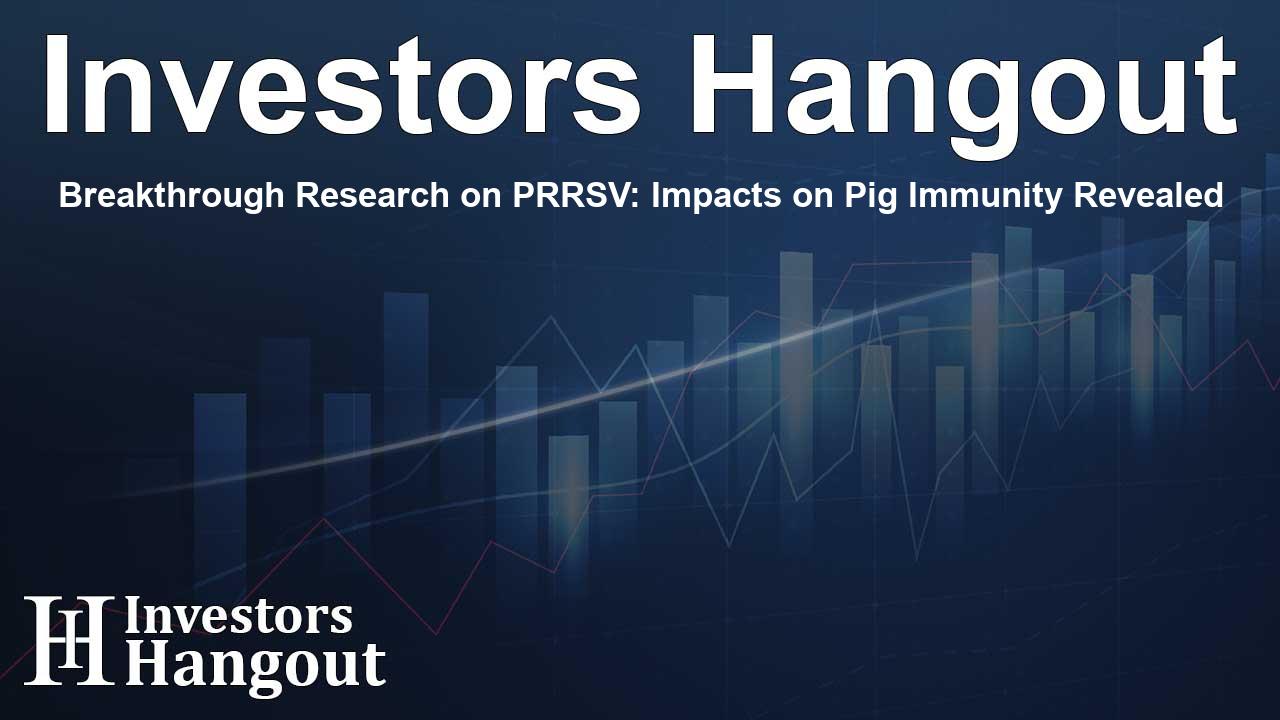Breakthrough Research on PRRSV: Impacts on Pig Immunity Revealed

Understanding PRRSV and Its Economic Impact
Porcine reproductive and respiratory syndrome virus (PRRSV) is a significant threat to the swine industry worldwide. This viral infection brings about reproductive issues in sows and respiratory complications in nursing and growing pigs. The challenge lies in the high genetic variability of the virus, which complicates the development of effective vaccines and hampers effective disease management.
New Research by Chung-Ang University
Researchers at Chung-Ang University are delving into the immune responses triggered by PRRSV. They aim to unlock crucial insights that could lead to advancements in vaccine development and strategies for managing this impactful virus. Recently, a team led by Dr. Jun-Mo Kim has been working diligently to fill the gaps in our understanding of how PRRSV affects swine.
Investigating Immune Cell Responses
Dr. Kim's team utilized a model to study PRRSV infections, focusing on the specific immune reactions observed in the lungs of infected pigs. Through sophisticated techniques that analyze protein-coding RNA transcripts from single cells, the researchers monitored how various strains of PRRSV affected immune cell composition. This research was recently published, highlighting the team's commitment to mitigating the industrial damage caused by this virus.
The Severity of Immune Responses
The study findings illustrate a stark contrast in immune responses to differing PRRSV strains. In cases of high virulence infections, there was considerable early lung damage and a noticeable imbalance in immune cell populations, particularly a decline in macrophages. Conversely, infections with PRRSV strains of moderate virulence exhibited delayed lung damage, along with fewer immune disruptions.
The Role of Protective Immune Cells
Interestingly, the less virulent strains resulted in higher counts of protective anti-inflammatory macrophages, suggesting that these immune cells may play a role in healing lung tissue post-infection. Despite less than 5% of macrophages becoming infected, the broader implications of cellular death and immune reactions pointed towards a significant role of extracellular vesicles in the progression of the disease.
Long-term Implications of Research Findings
Dr. Kim articulates that the insights gained from this study could pave the way for innovative therapeutic approaches aimed at ameliorating severe lung damage while promoting recovery in infected animals. Beyond the immediate benefits for livestock health and the associated economic advantages for the swine industry, the findings may also resonate with research on human respiratory viruses, potentially leading to broader applications of therapeutic strategies.
Real-World Solutions to Enhance Health
This research represents a significant step towards converting scientific discovery into actionable solutions, enhancing both animal and human health in manifold ways. By providing a deeper understanding of immune mechanisms, these findings open new avenues for targeted treatments within the agriculture sector and beyond.
Frequently Asked Questions
What is PRRSV and why is it significant?
PRRSV is a viral infection that affects pigs, leading to serious reproductive and respiratory issues. Its economic impact on the swine industry is considerable.
What are the key findings of the Chung-Ang University study?
The study revealed how different PRRSV strains affect immune responses in swine, highlighting variations in immune cell populations and lung damage.
How does the research benefit vaccine development?
By understanding the immune responses to PRRSV, researchers can develop more effective vaccines and disease management strategies.
What can be the broader implications of this research?
Insights from this study may also apply to human respiratory viruses, potentially enhancing therapeutic strategies for both animals and humans.
Who led the research at Chung-Ang University?
The research was led by Dr. Jun-Mo Kim, focusing on understanding the immune mechanisms affected by PRRSV.
About The Author
Contact Henry Turner privately here. Or send an email with ATTN: Henry Turner as the subject to contact@investorshangout.com.
About Investors Hangout
Investors Hangout is a leading online stock forum for financial discussion and learning, offering a wide range of free tools and resources. It draws in traders of all levels, who exchange market knowledge, investigate trading tactics, and keep an eye on industry developments in real time. Featuring financial articles, stock message boards, quotes, charts, company profiles, and live news updates. Through cooperative learning and a wealth of informational resources, it helps users from novices creating their first portfolios to experts honing their techniques. Join Investors Hangout today: https://investorshangout.com/
The content of this article is based on factual, publicly available information and does not represent legal, financial, or investment advice. Investors Hangout does not offer financial advice, and the author is not a licensed financial advisor. Consult a qualified advisor before making any financial or investment decisions based on this article. This article should not be considered advice to purchase, sell, or hold any securities or other investments. If any of the material provided here is inaccurate, please contact us for corrections.
